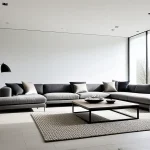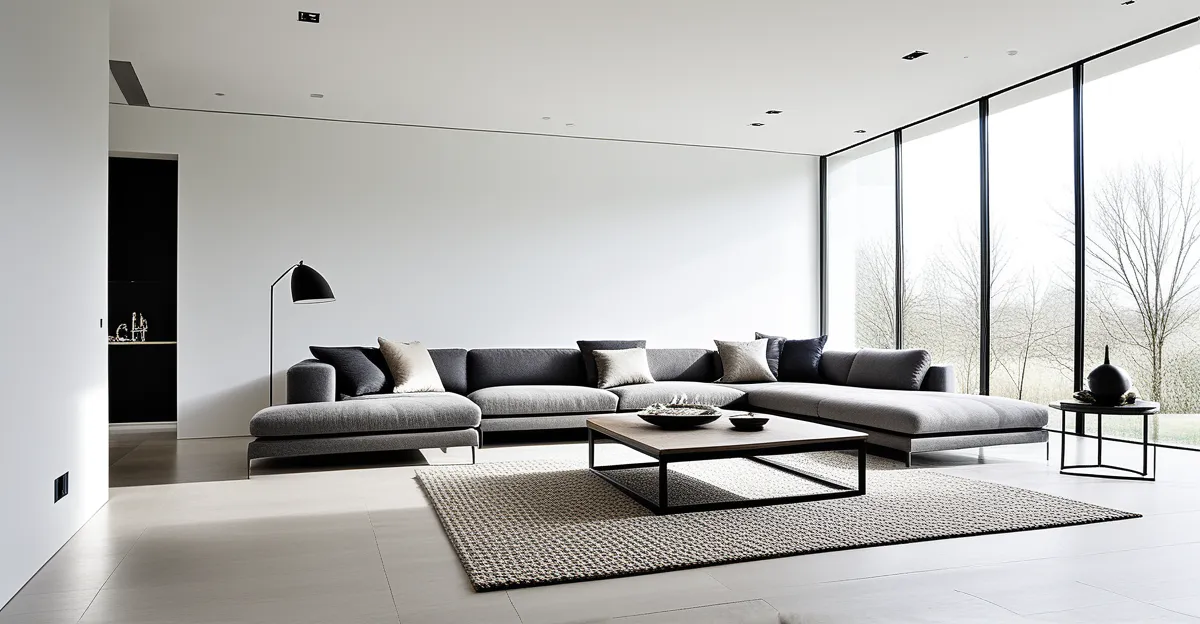How minimalist design supports mental and emotional health
Minimalist interior design significantly benefits mental health by creating a stress-reducing environment. Cluttered spaces often overwhelm the mind, causing tension and anxiety. By contrast, minimalist interiors emphasize simplicity and order, offering a clear and calm atmosphere that eases mental strain. This decluttered setting promotes emotional well-being by reducing visual noise and allowing the brain to relax.
Moreover, minimalist design enhances mood through the use of calming environments. Neutral color palettes, simple shapes, and natural materials work collectively to produce soothing surroundings that help balance emotions and encourage a sense of peace. Such spaces invite mindfulness, enabling occupants to experience greater calm and contentment throughout their daily routines.
Topic to read : How Can You Enhance Your UK Home Living Experience Through Smart Technology?
Another crucial benefit is the increase in focus due to reduced distractions. With fewer objects vying for attention, minimalist interiors foster an environment conducive to concentration and productivity. This aspect is vital for work and study spaces, as it supports mental clarity and efficiency.
In summary, minimalist interior design directly contributes to improved emotional health and mental balance by reducing clutter-induced stress, uplifting mood with calming aesthetics, and enhancing focus through simplicity. These benefits of minimalism make it a compelling choice for anyone seeking to elevate their overall well-being.
Also read : How Does Home Decor Reflect the British Lifestyle?
Psychological research linking minimalism to well-being
Scientific psychological studies consistently show that minimalist interior design fosters improved mental health and emotional well-being. Research reveals a clear connection between minimalism and wellness by demonstrating how simplified environments reduce cognitive overload and lower stress hormones. One key finding highlights that cluttered spaces increase cortisol levels, a stress indicator, whereas minimalism encourages calmness and recovery.
The science of minimalism often draws on psychological theories such as Attention Restoration Theory, which suggests that environments with fewer distractions replenish mental resources. Minimalist settings provide visual simplicity, allowing the brain to focus without the exhaustion caused by overstimulation. This aligns with findings that minimalist interiors improve concentration and emotional regulation.
Experts, including psychologists and designers, advocate for minimalist principles based on this evidence. They emphasize that adopting minimalism can be a proactive strategy for enhancing mental clarity and emotional balance. These experts point out that beyond aesthetics, minimalist design serves as a therapeutic tool, supporting resilience and well-being in daily life.
In summary, scientific research validates the benefits of minimalism by linking minimalist interior design to reductions in stress and improvements in cognitive function, underpinning why minimalist environments have become essential in promoting psychological health.
Practical ways to implement minimalist design for wellness
Implementing minimalist interior design effectively requires purposeful decluttering advice and thoughtful organizing methods for well-being. Start by evaluating your space and removing items that do not serve a clear function or bring joy. This intentional reduction minimizes distractions and promotes a calm, orderly environment that supports mental health.
Incorporate minimalist home tips such as using storage solutions that keep surfaces clear and maintain visual simplicity. Organizing methods for well-being emphasize grouping similar items and designating specific places to reduce decision fatigue. This helps sustain the benefits of minimalism by preventing clutter buildup over time.
Choosing calming color schemes and natural materials enhances emotional well-being by producing a soothing atmosphere. Soft neutral colors combined with textures like wood or linen align with minimalist principles and encourage relaxation. These choices amplify the stress-reducing effects of decluttered spaces.
Additionally, prioritize multifunctional, essential furniture to maximize space and functionality without overcrowding. Furniture that serves more than one purpose reduces excess possessions and maintains simplicity. Together, these practical strategies enhance the benefits of minimalism, creating an environment that nurtures both mental health and emotional balance.
Real-life examples of minimalism improving quality of life
Real-world case studies demonstrate how minimalist interior design markedly enhances emotional well-being and mental health. For instance, individuals experiencing high anxiety report significant relief after redesigning their living spaces with minimalist principles. These minimalist design success stories often emphasize the elimination of clutter, which directly reduces stress levels and fosters a tranquil environment.
One compelling example involves a home office transformation. By implementing simple, functional furnishings and adopting a neutral palette, the occupant noticed an increase in focus and productivity. This result aligns with documented wellness impact examples, where streamlined spaces reduce distractions and support mental clarity.
In workplaces, minimalist design has proven to improve employee satisfaction and decrease cognitive fatigue. Case studies reveal that environments prioritizing visual simplicity and order contribute to better emotional regulation and less burnout. Furthermore, daily routines in minimalist spaces often become more efficient, as fewer possessions and clear organization minimize decision-making stress.
These success stories collectively illustrate that embracing the benefits of minimalism transcends mere aesthetics. Instead, minimalist interior design serves as a practical, effective means to nurture mental health and promote lasting emotional balance in everyday life.






